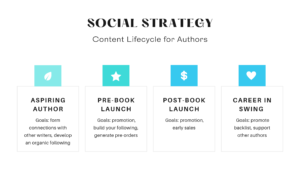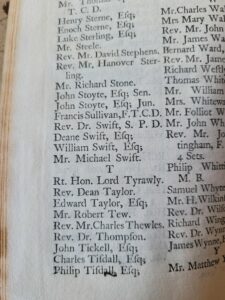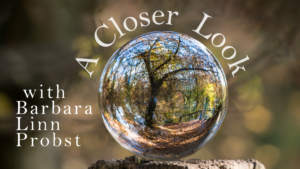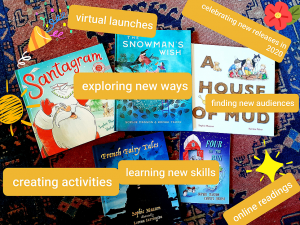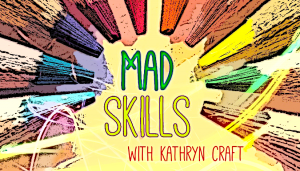Business
I want to talk about a very specific kind of rejection from editors – the one about how they just didn’t connect with the main character or characters. It has variations, but basically they didn’t find the character likable or relatable enough or they didn’t fall in love with the character enough – not to the level they needed in order to make an offer.
I’ve been publishing for decades. I’ve had twenty-some novels published. This means that I’ve seen a lot of rejection. For every novel that found an editor, there was a stack of rejections. Plus, many of my friends are writers and I’ve taught writing for years so I also hear from my students with books that have gone out on submission.
And so, friends come to me after a few rejections of this kind and they’re often upended. They now believe that they wrote characters that are unlovable. They have to rewrite the book so that their characters deserve love or at least to be liked.
Of course the writers can’t help but take it personally. I don’t have to go on here about where characters come from.
Women writers often hear the message within the message and it’s not new to them. Be more likable. It can land as: Why don’t you have your characters smile more? Why can’t you smile more?
For writers who come from underrepresented communities, who are BIPOC or LGBTQ+, those who are writing about things like poverty or violence against women – this list could go on and on — the note that the editor doesn’t connect to the characters can land hard. It can seem that the publishing world is telling the writer that their experience is too foreign, too much from the edges. It can feel like being othered when often the entire novel exists in order to show – beautifully, painfully – what othering feels like.
I don’t think editors are mindful of this at all. This is a larger problem that I won’t tackle here. I believe this response is so pervasive that it is, to them, a clear and quick way – a nearly nondescript way – to pass on a novel. Often the rejection comes with compliments about the writing but they do little to help if the larger note is so disorienting.
It’s become an absolutely predictable part of the process of having a friend’s book go to editors, so much so that I have prepared speeches to talk them through this kind of rejection.
I mainly tell them that this response — not connecting with the main character — is as close to a form rejection as it gets. It is the “I’m so sorry I already have plans” of the publishing world.
It means nothing.
Read MoreOne of my favorite vintage bookstore finds is two volumes (out of three) of a 1742 translation by Rev. Philip Francis of the complete works of Horace. It’s interesting not so much for the translations (Francis turns Horace’s simplicity into contrived eighteenth-century rhyming heroic couplets) but for the technique Francis used to get it published. At the beginning is a list of subscribers – famous and/or rich people who paid a fee to be publicly seen as supporting the author. Among the viscounts and bishops is one “Deane Swift, Esq.” That would be Jonathan Swift, of Gulliver’s Travels.
Of course, writers today don’t have to persuade subscribers to pay for publication, selling their work on the same model that PBS uses to fund Masterpiece Theater. But from what I’ve seen of my clients’ experiences, being a successful writer nowadays involves a lot of skills that have nothing to do with actual writing.
Editing, for instance. This comes in roughly two different flavors – conceptual editing, which critiques how well your plot and characters work, and copy editing, which deals more with correct spelling and usage. (Full disclosure, conceptual editing is what I do for a living.) A lot of writers hire this out, especially the conceptual part, since it’s all but impossible to fairly critique your own work.
But good editing can be pricy, and many beginning writers on limited budgets have to learn to do it for themselves. There are <ahem> a lot of good books on what to watch for as you rewrite. Critique groups, where writers trade critiques on one another’s manuscripts, can be a help. But editing, especially copy editing, is a very different skill from writing, and it’s one you may have to teach yourself.
Read MoreThe artist’s tools: From Deb Lacativa’s studio, where all the magic happens.
My first Author Up Close post for 2021 features someone many of you might already be familiar with. Deb Lacativa is not only an active member of the Writer Unboxed community, she was also the 2016 WU Conference Scholarship recipient and returned to deliver the 2018 keynote speech. Deb also reminded me that she was, in her own words, “the first sacrificial lamb to the ‘All the King’s Slaughter … I mean, All the King’s Editors’ feature on Writer Unboxed.” The story Deb submitted for that series is now complete and will be published in a few weeks.
I not only wanted to interview Deb because she’s a gifted storyteller and creator (and friend), but because from the start, Deb defined success on her own terms. When she realized her genre-bending, 800-page debut novel would likely never get buy-in from a traditional publisher, she decided to take a different route to publication. In this Q&A we learn more about the novel and the choices that led Deb on that journey. Of course, if you know Deb at all, you know her answers are filled with the same mix of magic and mayhem her stories are. And, as an added bonus, at the end of this post, there’s a special treat.
GW: Tell us a little about how your writing journey started and when you went from dreaming about becoming an author to taking actionable steps to becoming one?
DL: I’ve been writing since I figured out that crayons didn’t taste good and had a better purpose. I was surrounded by adults who frequently had their noses buried in newspapers. The headlines seemed designed for a toddler to puzzle out, so I pestered for answers because I wanted in on this grownup magic. “MOBSTER SLAIN” above a lurid black-and-white photo on the front page of the NY POST was the first sentence I ever copied. But, beyond bs-ing all my teachers with style over substance at every opportunity, it wasn’t until 2005 that I started writing for an audience on my blog: The misadventures of a textile artist. I used it to be engaging. Sometimes, downright hilarious.
Then, over the course of sixteen months starting in the summer of 2012, both my parents and my husband, Jim, passed away. By January 2014, I needed to get out of the house and be with people who did not know me. It could have been throwing pots or axes, it didn’t matter just as long as there were no condolences. Meetup offered a writer’s group not far away. “Bring a sample of your writing.” I took my turn and was immediately hooked on getting feedback, good or bad. I’d found my heart and purpose for writing. I never dreamed of becoming a published author. It became an objective. Like learning to read and write, it was a skill set that I wanted to learn.
Read MoreNo matter who publishes your book, your obligation to promote it is inescapable. Every author would rather be writing than promoting so it’s important to make your time flogging your book count. Also, if you’re like me, you try hard not to lose money writing, and that means outsourcing as little as possible. Because social media platforms are the predominant cost-free methods available to us, creating eye-catching graphics is a skill we’d all be wise to optimize.
Luckily, I truly enjoy making graphics, and when I have time or am procrastinating writing, I volunteer my services to friends. Over the years, I have learned a thing or two about promoting books using images, and I’m here to share them with you.
Keep it simple. Eye-catching graphics are not complicated; they are clean. How do you make a clean graphic? Someone who has studied graphic design could explicate the principles, but since that’s not me, I can only tell you what I try to do: create a mood and showcase the cover. If you’re lucky, your cover and title already convey genre and mood. The job of the graphic is to amplify that or to suggest what reading the book would be like. It’s spin, it’s fantasy, it’s advertising. For two friends, I used Canva (https://www.canva.com/) to create two distinct moods. For Jessica Strawser’s upcoming release I echoed the water motif on the cover; it didn’t need more.
For Amy Sue Nathan’s book, I picked up the beach motif and used a less stuffy font appropriate to the tone of the story.
Limit the text. The primary purpose of a graphic is to get attention. The secondary purpose is to convey information. If you try to convey too much, however, you’ll muddy the waters and fall short of both goals. People are scrolling, they are distracted, they are eating lunch and will swipe past a wordy graphic. If you are promoting a giveaway, say “giveaway” and not “enter the first giveaway for my new release.” A brief quote, even a single word (“Extraordinary!”), gets the message across better than two-sentences. If you want to include a link to your website or the book’s page, make it small and stick it in a corner. Links are already in your post, right?
Make your cover the star. Whatever background you choose, ensure it does not compete with your cover.
Read MoreMy latest book, a YA speculative fiction novel titled The Ghost Squad, is out this week. I’m delighted, of course–and thank you so much to WU for helping me celebrate its release with a Take Five interview!
That also got me thinking about new releases, how we go about celebrating them, and the different things authors do to highlight their book to readers, so this what I want to look at, in my first WU post for this new year. In the age of COVID, many of us are trying to come up with ingeniously new ways of celebrating new releases…
In my own case, both in the past and more recently, I’ve done a selection of many things over and above what my publishers have done, and all planned well ahead of release time. For example, in 2020 I did all of the following, to help to highlight my five new releases–it was a big year for new books for me and I had to work pretty hard to try and showcase them! Of course I didn’t do all of these things for each book, just a selection, as appropriate:
These all had varying degrees of success, but most worked quite well. Some were more time-consuming than others, of course. And one of the things I found in 2020 when it came to publicizing my new releases was that though reviews were really hard to come by–harder even than usual–people seemed much more interested in doing author interviews. I was invited to do several over the year, both in video and podcast, as well as being included in video series—readings, talks–initiated by children’s literature organizations specifically for the purpose of supporting authors and illustrators.
In the case of other authors, here are some things that I’ve seen people do:
Read Morephoto adapted / Horia Varlan
The Truth that resides in the beating heart of a novel is sacred to its author. Its pursuit called the writer to the page and inspired the perseverance to publish against daunting odds. Once your story feels deeply true, you long to share it—and your target audience will long to read it.
Even though your main reason for writing fiction is illustrative more than prescriptive, you can offer a meaningful by-product through quotes that have the potential to spread your novel’s influence. Yes, your novel’s wisdom can serve as an effective marketing tool.
This notion may come across as crass—or at times, even pointless. In a society increasingly influenced by marketing swagger, it can seem it no longer matters what we know to be true, as long as we can convince people to buy what we’re selling. Writing so that our story’s wisdom can be readily fashioned into a marketing meme may be the antithesis of why we write. And yet if your storytelling has struck on a universal truth, and you can deliver it in a fresh way, your readers will share it even without your blessing—through Kindle highlighting, underlining in shared paper copies, and broadcasting through memes on social media—and in so doing, plant seeds of truth in an increasing number of readers. Pulling quotes is so ubiquitous that Goodreads has a section for this on each novel’s page, where readers list their favorites.
Mainstream media loves quotes too. In August of this year, in honor of the film’s 20th anniversary, Parade.com published 20 Classic Forrest Gump Quotes. Tell me: when Forrest first spoke of life’s box chocolates, did you roll your eyes and say “how blatantly commercial”—or were you charmed?
And or course authors are readers too. Hungry for nuggets of wisdom that will inspire their own imaginations, other authors may laud your insight by featuring one of your quotes as an epigraph in their own work. In the novel I just finished reading, The Favorite Daughter, author Patti Callahan Henry featured quotes about memory at the top of each chapter as her characters grappled with the implications of their father’s increasingly troubling dementia. The epigraph for Chapter 23 was from Pat Conroy’s Beach Music: “Except for memory, time would have no meaning at all.”
Readers love such quotes, that they can print out and hang on their wall. Just look at the number of “highlighters” that litter the pages of your Kindle. Here’s one from Roland Merullo’s novel, Breakfast with Buddha: “When you are a crank, you put yourself on the top of the list of people you make miserable.” Great quote, right? Turns out 1200 others (and counting) agree with you.
Let’s play a game. Do you know which authors generated these quotes?
Read More“My publisher told me that sales numbers the week of publication will make or break my book’s future. Let’s hurry and make sure as much news as possible goes live that week!”
“With my publication date in 3 weeks, I’d like to start PR right away to make a huge splash that day and boost my book’s chances of success.”
Nearly every day I hear comments like this from authors hoping that PR and marketing aimed at their publication date will catapult their new books to overnight success. Here’s the formula they’ve been taught:
“Get the word out ASAP = pique potential readers’ interest right away + drive sales.”
If only it were accurate.
As it turns out, reality is starkly different. Let’s unpack it.
First, getting the word out in and of itself takes time. If you have a publicist, they’ll need to develop a thoughtful strategy and messaging plan. They’ll need to build press lists and prepare marketing materials and press releases. When done well, this is a lengthy process filled with myriad gnarly details that slow things down.
Once communications do start rolling out, recipients need time to process them. Reporters, editors and reviewers get many hundreds of pitches a day sent directly to their inbox. They may not spot your pitch or press release right away. When they do finally see the news about your book (if they do!) they might not be able to focus on it for a while.
Then—if and when they do see the news about your book, and if and when they decide to follow up—lots of things need to happen before a review or interview can go live. Media contacts may need to:
Sure, there are times when things happen much more quickly. But those are rare. I’ve described this process in detail before here on Writer Unboxed.
Once the coverage is out in the world your potential readers need to see it and focus on it. That, too, takes time. At any given nanosecond, your audience, like the rest of us, are all in the midst of a thousand different things.
All of this adds up not to instant interest and sales, but to the beginning of a long, slow trek. Which is why I always say that BOOK PROMOTION IS A MARATHON, NOT A SPRINT.
In the sprint scenario, you race to do everything imaginable—PR, social media, newsletter marketing, signings, etc—over the course of a few months leading up to your publication date, then come to an abrupt halt […]
Read More
